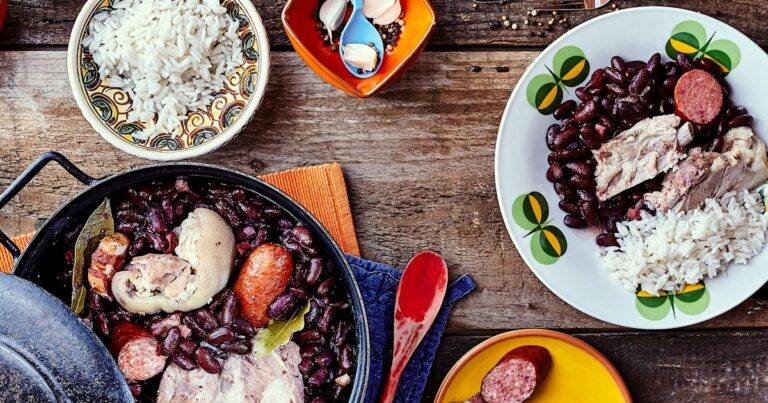Introduction: Brazilian Cuisine
Brazilian cuisine is known for its diverse flavors and influences from various cultures. It is a mix of indigenous, European, African and Asian cuisine that has developed over centuries. The country’s vast size and diverse geography have shaped its cuisine, with each region having its own unique food culture.
The Geographical Regions of Brazil
Brazil is divided into five geographical regions – North, Northeast, Central-West, Southeast, and South. Each region has its own distinct cuisine, which is influenced by the local climate, available ingredients, and cultural heritage.
Northern Brazilian Cuisine
The cuisine of the Northern region of Brazil is heavily influenced by the Amazon rainforest and the indigenous communities that live there. The food is characterized by the use of exotic fruits, fish, and manioc. Some popular dishes include Tacacá, a soup made with tucupi (a yellow broth made from cassava root), jambu (a leafy herb), shrimp, and chili peppers. Another popular dish is Pato no Tucupi, a duck stew with tucupi sauce.
Southern Brazilian Cuisine
Southern Brazilian cuisine is influenced by European settlers who arrived in the region in the 19th century. The cuisine is known for its meat dishes, with churrasco (barbecue) being a popular method of cooking. Other dishes include feijoada, a stew made with black beans and various pork or beef cuts, and pastel (deep-fried pastry) filled with cheese or meat.
Central Brazilian Cuisine
Central Brazilian cuisine is characterized by its use of cassava, a staple food in the region. One popular dish is Arroz com Pequi, rice cooked with pequi fruit, which has a distinctive flavor. Another popular dish is Pamonha, a sweet or savory corn dish wrapped in corn husks and boiled.
Coastal Brazilian Cuisine
Coastal Brazilian cuisine is influenced by its proximity to the sea and the African heritage of the region. Seafood such as shrimp, lobster, and fish are common ingredients in many dishes. Moqueca, a seafood stew with coconut milk and dendê oil, is a popular dish in the region. Acarajé, a deep-fried ball of mashed beans filled with shrimp, is also a popular snack.
Indigenous Influences on Brazilian Cuisine
Indigenous communities in Brazil have had a significant influence on the country’s cuisine. They introduced ingredients such as cassava, tapioca, and various fruits to Brazilian cuisine. Indigenous cooking methods, such as pit cooking and grilling over open flames, are still used today.
European and African Influences on Brazilian Cuisine
The European and African influences on Brazilian cuisine can be seen in the use of ingredients such as beans, rice, and meat. The Portuguese introduced dishes such as feijoada and bacalhau (salt cod), while the African influence can be seen in dishes such as Vatapá, a spicy seafood stew with bread, coconut milk, and peanuts.
In conclusion, Brazilian cuisine is a fusion of many cultures and flavors. The unique geography of the country has allowed for the development of distinct regional cuisines, each with its own unique flavors and ingredients. From the Amazon to the coast, Brazilian cuisine is a true reflection of the country’s diverse cultural heritage.

